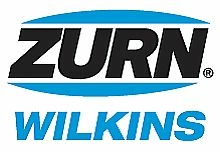Helpful Resources and Frequently Asked Questions
Backflow Associations
Frequently Asked Questions
Backflow is the undesirable reversal of the flow of water. Backflow may contain non-potable, harmful substances that are transferred into a public or individual water system, causing serious health and safety hazards.
Add spill-resistant vacuum breaker (srvb)
BFPA devices have rubber components that may be damaged or deteriorate over time. Usually, valves fail about once every five years. That’s why BFPA manufacturers and most cities, counties, and states require yearly device testing to ensure the device works correctly and is compliant with regulations.
A BFPA is a valve that will only allow water to flow in one direction. This helps prevent non-potable substances from entering public water supplies. Residential water systems (washing machines, dishwashers, water fountains, pools, lawn irrigation systems, etc.) that are directly attached to your water line may contain water that doesn’t meet potable water specifications. These systems should be protected with backflow prevention systems, which will isolate them from the public water supply.
Backpressure is when the pressure in a non-potable system is greater than the inlet pressure of a potable system. The potable water may then be forced into a reversal of flow through the cross-connection, allowing non-potable substances to contaminate the potable water system.
Backsiphonage is a sudden decrease in water pressure in the water distribution system, such as that caused by a water main break. The reduction in pressure can lead to a suction effect, which reverses water flow and pulls non-potable substances into potable water systems.
Either backsiphonage or backpressure causes backflow.
A cross-connection is any temporary or permanent connection between potable water and non-potable water or substances. A cross-connection can occur in a public or consumer’s water system.
A bfpa is a series of valves configured to allow water to flow in only one direction…. Any water system that comes in contact with a possible contaminant requires a bfpa.
Incidents
Brighton, Colorado, January 1990
SOURCES OF INFORMATION:
– Pacific Northwest Section of the American Water Works Association, Summary of Backflow Incidents, Fourth Edition, 1995
– Watts Industries, Inc.; Watts Regulator News/Stop Backflow
CASE HISTORY:
On January 30, 1990, authorities closed Overland Middle School in Brighton, Colorado, after an antifreeze-like chemical was found in the school’s potable water system. They sent nine students complaining of flu-like symptoms to an area hospital for treatment. The hospital released the students after treating them for ethylene glycol poisoning. Ethylene glycol had backflowed into the school’s potable water system from the school’s hot-water heating system.
During a routine maintenance check of the Overland Middle School’s hot-water heating boiler, maintenance workers left open a valve on the potable water line feeding the boiler. This allowed boiler water containing the antifreeze ethylene glycol to backflow into the school’s potable water system. There was no backflow preventer on the feed line to the boiler.
The Overland Middle School was closed for an additional day while workers flushed the potable water piping at the school and “repaired the hot-water heating system leak.” Presumably, workers installed a proper backflow preventer in the potable water line feeding the hot-water heating boiler.
Woodsboro, Maryland, June 1983
SOURCES OF INFORMATION:
– Pacific Northwest Section of the American Water Works Association, Summary of Backflow Incidents, Fourth Edition, 1995
– U.S. Environmental Protection Agency, Cross
– Connection Control Manual, 1989
– Watts Industries, Inc.; Watts Regulator News/Stop Backflow CASE HISTORY
CASE HISTORY:
In June 1983, “yellow gushy stuff” poured from some faucets in the town of Woodsboro, Maryland. Town personnel notified the County Health Department and the State Water Supply Division. The State dispatched personnel to take water samples for analysis and placed a ban on drinking the water. Firefighters warned residents not to use the water for drinking, cooking, bathing, or any other purpose except flushing toilets. The town began flushing its water system. An investigation revealed that the powerful agricultural herbicide paraquat had back flowed into the water system.
Someone left open a gate valve between an agricultural herbicide holding tank and the town’s water system and thus, created a cross-connection. Coincidentally, water pressure temporarily decreased due to the failure of a pump in the water system. The herbicide paraquat was backsiphoned into the water system. Upon restoration of pressure, paraquat flowed throughout much of the water system.
Fortunately, this incident did not cause any serious illness or death. The incident did, however, create an expensive burden on the town. Tanker trucks were used temporarily to provide potable water, and Woodsboro flushed and sampled its water system extensively.
Connecticut, August 1982
SOURCES OF INFORMATION:
– Pacific Northwest Section of the American Water Works Association, Summary of Backflow Incidents, Fourth Edition, 1995
– U.S. Environmental Protection Agency, Cross-Connection Control Manual, 1989
– Watts Industries, Inc.; Watts Regulator News/Stop Backflow
CASE HISTORY:
In August 1982, residents in a Connecticut town reported hissing and bubbling noises coming from washing machines, sinks, and toilets. Faucets sputtered out small streams of water mixed with gas. Propane gas had backflowed into the town’s public water system. Local firefighters and other officials asked hundreds of residents to evacuate their homes and businesses.
The town provided water to a propane storage facility in the area. Water was furnished to the facility for both domestic use and fire protection and entered the facility through a single eight-inch-diameter service connection. The facility included 26 subsurface 30,000-gallon liquid propane storage tanks. On the day of the backflow incident, workers needed to repair a storage tank at the propane storage facility. Before repairing the tank, workers had to purge the tank of residual propane.
There are two common methods for purging liquid propane storage tanks. One method is to use an inert gas such as carbon dioxide. The other method is to use water. The use of water is the preferred method because it is a more positive method and will float out any sludge as well as gas vapors.
Accordingly, workers attempted to purge the tank using water. They connected a hose to the tank from one of the two fire hydrants at the facility. Unfortunately, the pressure in the propane tank was about 85 to 90 psig, while the pressure in the town’s public water system was about 65 to 70 psig. Consequently, propane gas backflowed into the town’s public water system. It was estimated that about 2,000 cubic feet of gas flowed into the water system over a 20-minute period. This is enough gas to fill approximately one mile of eight-inch-diameter water main.
Fires were reported at two houses, and fire gutted one of these houses. At another house, a washing machine exploded. Police, propane company workers, and town waterworks personnel, however, limited damage and injuries by quickly sealing off the affected area. The town flushed fire hydrants and individual building plumbing systems and monitored for gas. The propane company promptly instituted revised propane tank purging procedures at its storage facility.
Quick support
To schedule a free estimate, required annual testing, or to learn more about our services, call
1-877-290-4003 or fill out the form below — we will be in touch soon!









